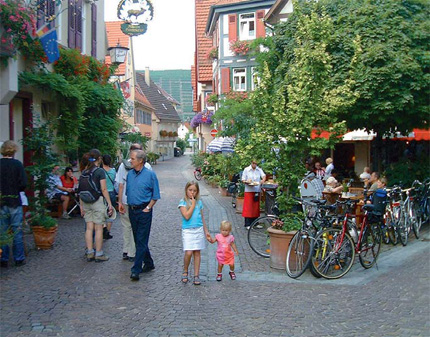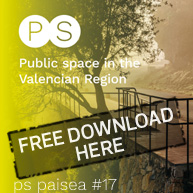Article 02, paisea 021. The street, space of mobility | Vicente Torres Castejón
The street, which used to be a multifunctional public space, was turned by the popularisation of the motor car into a public thoroughfare, a space of mobility, with a significant impact on urban life.
This trend is being reversed by a new culture of sustainable mobility in the public thoroughfare. The design of the street is becoming more varied and flexible, giving protection and priority to “softer” users, and restricting motorised traffic to make space for other uses.

The street is a public space. Traditionally (though less so now) it was always a space for meeting, socialising, and playing games… But at the same time it was (and still is, above all else) a space for mobility. The high density of population and activity found in cities meant that great quantities of supplies and goods had to be transported, and the people moved around. The street became a public thoroughfare, a place of transit. For a long time, this was a common space, shared by walkers, delivery boys, handcarts, beasts of burden, carts and coaches. In the early 19th century trams began to be introduced – vehicles on rails, pulled by animals – and at the end of the century this form of transport was firmly established and popularised with the introduction of electricity. Despite moving along rails, the tram usually had to share the street with all the other users, who gave way according to size or danger, in a system that was self-regulating but not without accidents and victims.
Full article HERE
paisea 021 [the street 2], available in online store HERE and in digital edition HERE
Tags: articles, news, paisaje, paisea, public space, publications












